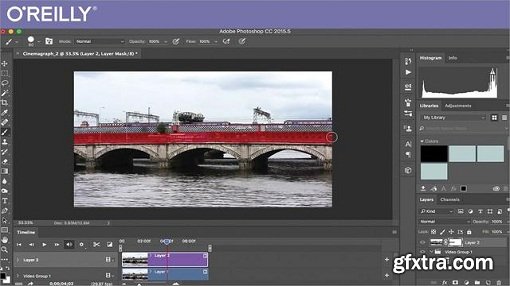
Duration: 1hr 18m | Video: h264, yuv420p, 1280x720 30fps | Audio: aac, 44100 Hz, 2 ch | 844 MB
Genre: eLearning | Language: English
Imagine this: A still image close-up of a hand holding a soapy glass next to a stream of water pouring from a faucet. But wait… it’s not entirely a still image. The fingers are motionless, and so is the glass and the faucet. But the stream of water? Well, it has movement. It pours and pours. By definition, a cinemagraph is a loop with some moving parts and some parts that don’t move at all.
The point of cinemagraphs is to grab the viewers’ attention and in this course Photoshop master Andy Anderson will grab yours by showing you how to make them. Students should have a basic working knowledge of Adobe Photoshop and be able to shoot simple videos, or have a source where they can obtain video clips. Learn what a cinemagraph is and how to discern between a great one and a good one
Understand the equipment and software requirements for producing cinemagraphs
See four different methods for creating cinemagraphs and the best ways to save them
Discover the best ways to record cinemagraph footage for maximum impact
Learn how to create an efficient workflow from camera, to computer, to final output
Explore clip trimming, video masking, unify and tween techniques, and more
------------------------------------------------------------------------------------------
Top Rated News
- Sean Archer
- AwTeaches
- Learn Squared
- PhotoWhoa
- Houdini-Course
- Photigy
- August Dering Photography
- StudioGuti
- Creatoom
- Creature Art Teacher
- Creator Foundry
- Patreon Collections
- Udemy - Turkce
- BigFilms
- Jerry Ghionis
- ACIDBITE
- BigMediumSmall
- Boom Library
- Globe Plants
- Unleashed Education
- The School of Photography
- Visual Education
- LeartesStudios - Cosmos
- All Veer Fancy Collection!
- All OJO Images
- All ZZVe Vectors



